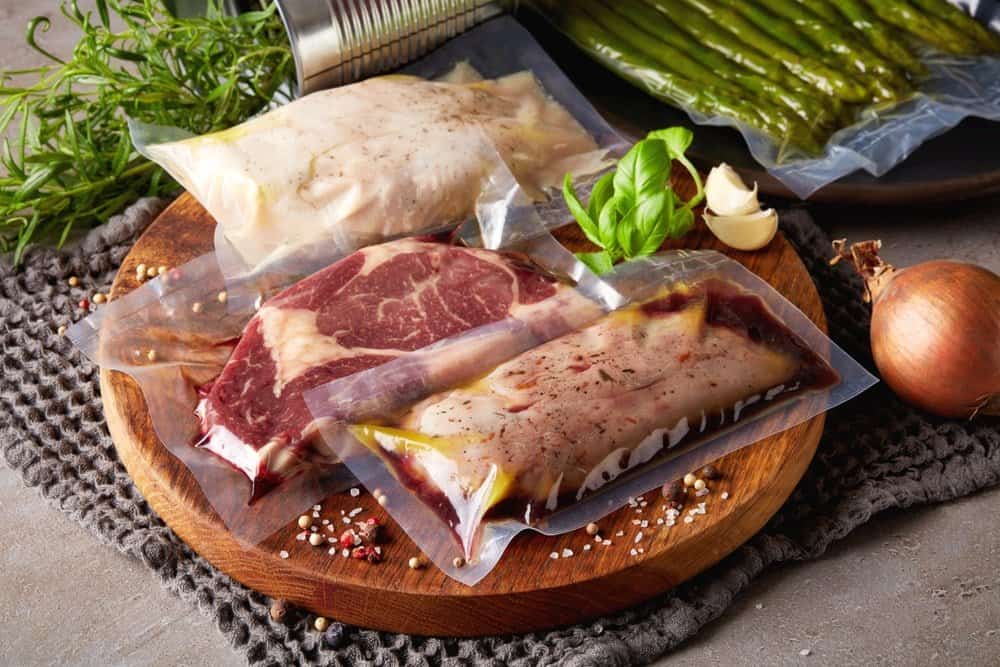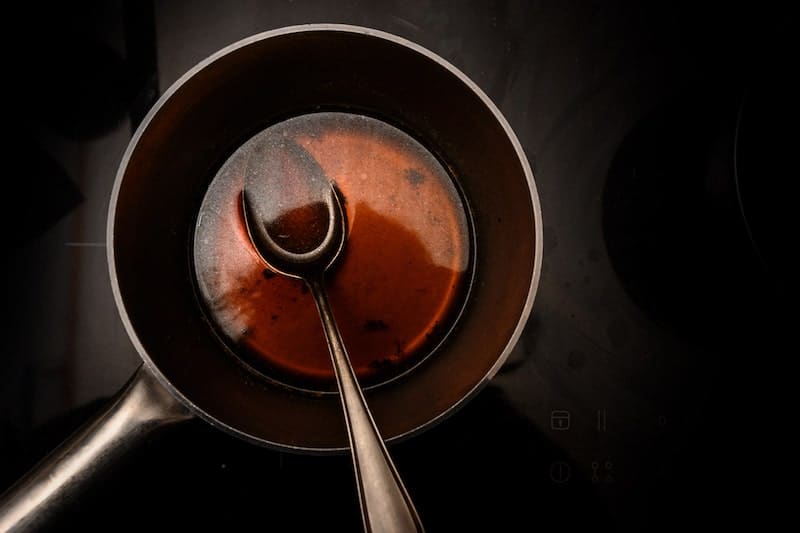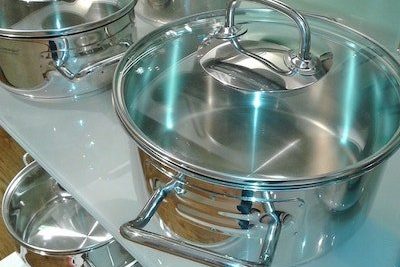A Guide to Making Sauce From Sous Vide Juices
For those of you who cook with sous vide machines, have you noticed all of those juices leftover in the bag once you’ve finished cooking? Do you take the meat out of the bag and throw the rest of the contents down the drain?
Well here I’ll explain what those juices are, and how you can actually use them to take your dishes to the next level!
The main lesson here being, making sauce from sous vide juices leftover in the bag. In addition to a pan sauce, you can also make gravy, a stock, stir fry sauce, or use the juices for basting.
What Are Sous Vide Juices, and Where Do They Come From?
Sous vide juices refers to the leftover liquid in sous vide bags after the food has been cooked.
Just like humans, animals are mostly made of water too. When you cook a piece of meat, the heat draws the water out of the meat.
The same thing happens when you sous vide steak, pork, or chicken. You find a good amount of liquid in the bag along with the cooked meat.
Interestingly, cooking the meat for longer doesn’t produce more meat juices. However, cooking the meat at higher temperatures does (and at lower temperatures you get less juices).
While sous vide liquid is mostly water, what’s so great about it is that it has intense flavor from the meat, fat, and seasoning you used all perfectly melded together.

Proteins in Sous Vide Juices
In addition to water, proteins from the meat are also released in sous vide juices due to the heat from the cooking process.
These proteins should be filtered out from the sous vide liquid because, when you use the juices to make a sauce (more on this below), the proteins coagulate, forming clumps or “sludge” in the sauce.
There are a few simple steps to filter out the proteins from sous vide juices:
Step 1.
Strain the juices from the bag by pouring the contents (with the meat removed, of course) through a strainer into a container or cup. This removes any small pieces of meat or bits from the seasoning, so you’re left with just the liquid.
Step 2.
Pour the liquid into a pot or pan and heat it at a low temperature, bringing it to a simmer. You’ll see the proteins coagulate at the top. This is what you want to remove.
Step 3.
To remove the coagulated proteins, you can either skim them off the top with a spoon or strain them out (by pouring the whole thing through a fine mesh strainer, cheesecloth, coffee filter, etc. into a container or cup).
Step 4.
You can now use the remaining, filtered juices to make a sauce or for any of the other uses I describe below.
How to Make Sauce From Sous Vide Juices
One of the best things you can do with sous vide juices is turn it into a sauce or jus! Check out the steps below on how to do this.
Step 1.
Whether you want to cook steak, chicken, pork, etc., you should sous vide the meat first.
Step 2.
Follow the steps outlined above to filter out the proteins.
Step 3.
Sear the meat in a pan on both sides.
Step 4.
Take the meat out of the pan and set it aside.
Step 5.
To make a pan sauce, turn down the heat to medium temperature, and add some oil (eg, olive oil) to the pan.
Step 6.
Add diced onions or shallots and diced garlic to the pan and sauté. You can also add fresh herbs here if you’d like.
Step 7.
Add the filtered sous vide juices to the pan and bring to a simmer. Use the juices to deglaze the pan (scrape off the onions and garlic from the bottom of the pan and let it dissolve into the sauce).
You can also add some red wine or white wine here first to deglaze the pan before adding the sous vide juices.
Step 8.
Let the sauce reduce until it has thickened a bit. Reducing the liquid really concentrates the flavors and gives the sauce a slight thickness. You can also add butter here for added richness if you’d like.
Step 9.
Plate the sous vide meat. Pour the sauce over the sous vide meat or have it on the side, whatever you prefer. Enjoy!
Other Uses for Sous Vide Juices
Gravy
Gravy is a sauce or jus made with stock that’s thickened with flour. Here are the steps on how to make a gravy from sous vide juices:
Step 1.
Heat some butter up in a pan until it melts and starts to brown. You can also saute onions here if you’d like.
Step 2.
Add the flour and stir it until the mixture becomes thick and light brown in color.
Step 3.
Add the sous vide juices (after you’ve filtered out the proteins following the steps I’ve outlined above), continuously stirring.
Step 4.
While stirring, bring to a boil.
The end result should be a thick, rich gravy!
Basting
Basting is a cooking process that involves regularly pouring the juices released from the meat back over the meat while it’s cooking. This is an excellent method for keeping the meat moist.
You can do this with the sous vide juices but after the meat has finished cooking.
Once you’ve plated the sous vide meat, you can pour some of the juices over the top to keep it moist and juicy.
Stock/Broth
You can use the sous vide juices the same way you would use chicken, beef, or vegetable stock. Again, I recommend removing the proteins first (see my steps above on how to do this).
Stir Fry Sauce
With any sautéing or stir frying you would do that involves adding a stock (with vegetables for example), instead of using stock, you can use the sous vide juices.
This is a great way to repurpose the juice and add intense flavors to a side dish.

Tips for Handling Leftover Sous Vide Juices
First, since saltiness can really intensify throughout the sous vide cooking process, you can add little or even no salt when you season the meat before you cook it.
You can always salt the meat afterwards, and this way, you aren’t left with overly salty bag juice that you won’t be able to use. Alternatively, you can add salt to the juice when you turn it into a sauce.
Another tip, after straining the juice, is that you can freeze it (in ice cube trays or jars) and save it for another day. Just remember to follow the process for removing proteins before using the juices.
Finally, you don’t have to filter out the coagulated proteins from the sous vide juices. They’re safe to eat, but it can just be unappealing to deal with all of those clumps.
In Summary
So what’s the lesson here? You can use that leftover liquid in the sous vide bag to take your sous vide cooking to the next level, so don’t throw it away!
Just follow my tips above for making sauce from sous vide juices, and don’t forget to experiment with those other uses as well.








